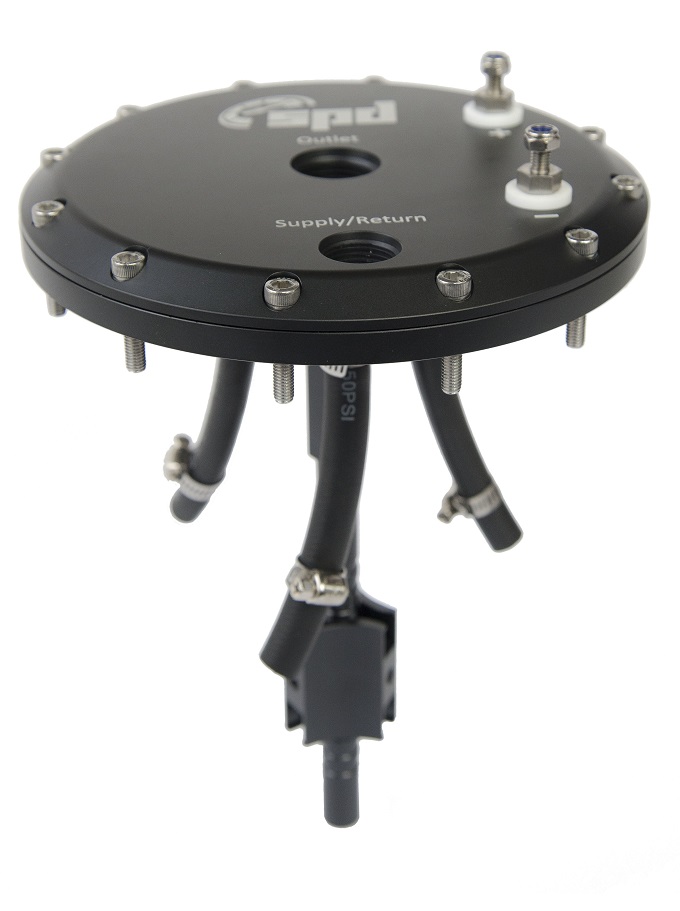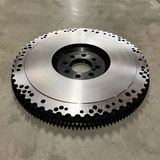Fuel pump hanger- Information

Information about fuel pump hanger / fuel tank hanger / pump hanger / fuel pump assembly
- Fuel pump hanger
- Installation
- Accessories
- Problems
- Compare fuel pump hangers
1 ▼
Fuel pump hanger
Fuel pump hanger / assembly enables you to use one or more fuel pumps inside the fuel tank. A fuel pump hanger is used when you want to build your own fuel tank or where you are rebuilding an existing tank to use more fuel pumps or a pump that does not fit in the original pump holder.
Often with a fuel pump hanger you can connect several fuel pumps where all pumps are branched together to one output. Then only one feed hose is needed up to the engine and one return hose back to the fuel tank. The return line is also usually mounted in the fuel pump holder.
This in turn makes it easier and saves space as you don't have to use Y-cross and more connections to install your fuel system.
When choosing a fuel pump hanger, it is important that you check that the assembly meet your requirements and that it fit your application. Review the installation dimensions and selected fuel pumps to ensure that it fits as desired.
2 ▼
Installation
When installing your pump hanger, it is important that it seals and is tightened properly against the fuel tank to avoid leaks. Therefore, use recommended accessories such as clamping ring flanges and gaskets.
Make sure you use recommended hoses and any plugs for a safe and functional installation.
When connecting power to your fuel pump fixture, it is important that you follow the correct wiring diagram from the fuel pump/pumps to the power supply and that you use the correct cable size.
- A fuel pump fitting normally has a connection for fuel supply and one for fuel return as well as +/- to power the pumps
- Some are prepared for tank ventilation and built in roll over valve.
- Some fuel pump fittings have built in surge tanks to further secure fuel pressure
- Fuel filling connection can also be mounted in the fuel pump hanger.
- You can mount a fuel level gauge in the hanger as well
3 ▼
Accessories
Fuel hoseThere are hoses that are made for in-tank use. These are proven to be submerged in fuel and are available for E85 / Ethanol and other aggressive fuels. These hoses are called PTFE and are a plastic mixture that can withstand being submerged.
Mounting flange
To easily and safely mount the fuel pump hanger in your fuel tank or fuel cell you use this mounting flange. It is located on the inside of the fuel tank and seal when screwed together with the pump holder lid and a gasket.
Gasket
To make sure your fuel pump holser seals properly to avoid leaks. Keep in mind that if different materials meet each other, these can shrink and swell to different extents at different temperatures. Therefore, always tighten your pump holser assembly afterwards in different temperatures to avoid leakage.
Fuel pump
A range of different types of fuel pumps for in-tank assembly / mounting in tank. Review the type(s) you want and that it is manufactured for the correct fuel. Which power target you have determines which or how many fuel pumps you need.
Power supply
In order for you to be able to safely and neatly supply power to the fuel pump mounted in the holder, there is usually a connector or connections in a fuel pump hanger.
4 ▼
Problems
Low / no fuel pressureCheck if the fuel pump(s) suck in fuel.
Inspect hoses and check for leaks. Since leakage between pump and tank inside the fuel tank is difficult to see, it is very important that these connections are tight.
Check that the fuel pump(s) are working properly.
Check the connection of the power supply, fuse?
Check the connection of the fuel pump(s).
Check fuel filter.
Not getting the desired power?
Review the specification of your fuel pumps, are they specified for your purpose?
Do you have large enough fuel lines to the engine?
Do you have large enough injectors?
Is your fuel filter clogged?
▼
▼
-
Fuel system
- Fuel system: Components and assembly
- Fuel system: Common problems
- Choose the correct fuel injector
- Check valve - Information
- Compare Fuel injectors
- Different Type of Fuels [Gasoline or Ethanol?]
- Different types of fuel systems
- Fuel catch tank / Fuel surge tank
- Fuel cell
- Fuel filter
- Fuel pressure regulator
- Fuel pump
- Fuel Pump Hanger - Information
- Fuel rail - Information
- Injector flow - Horsepower rating
- Injector size
- Tank ventilation / Roll over valve











































